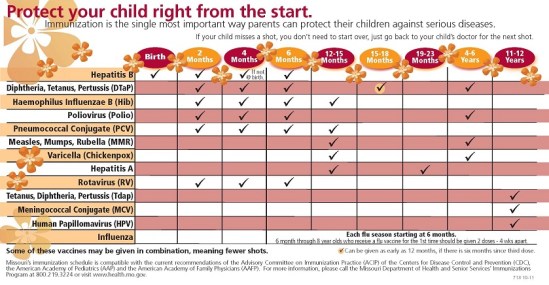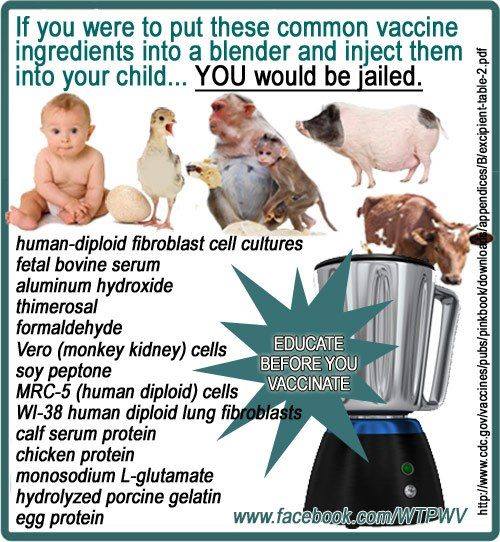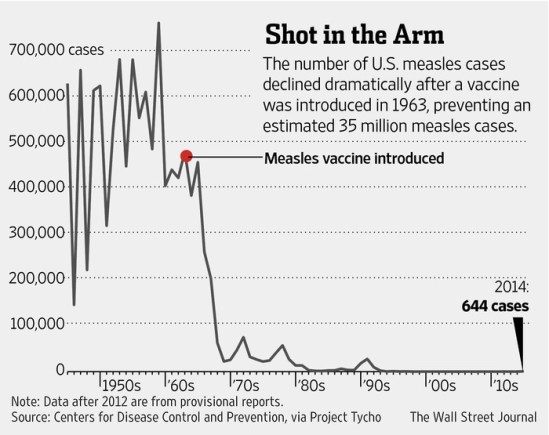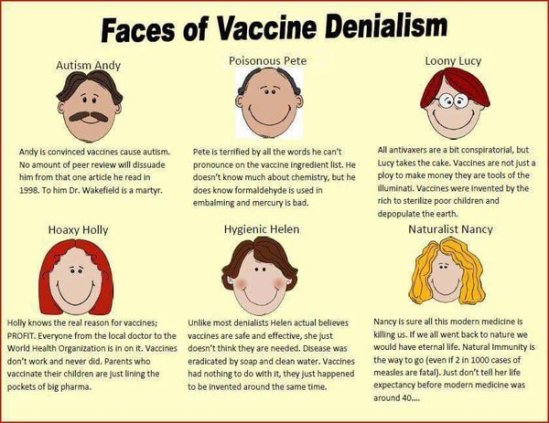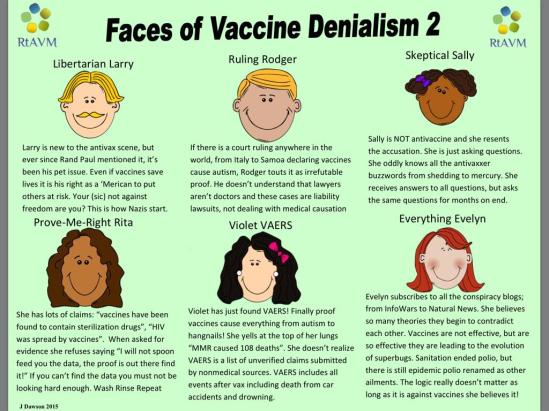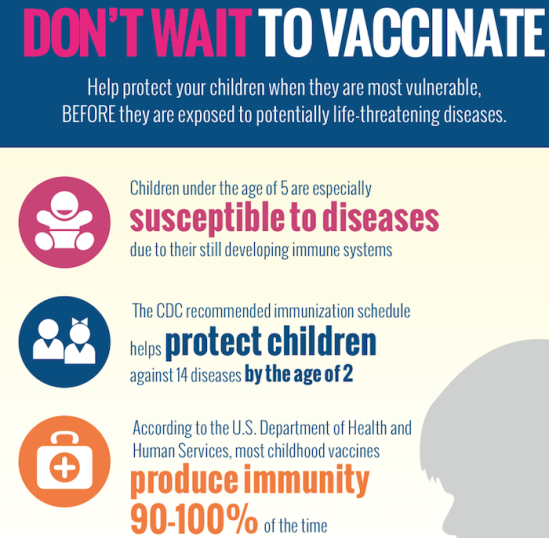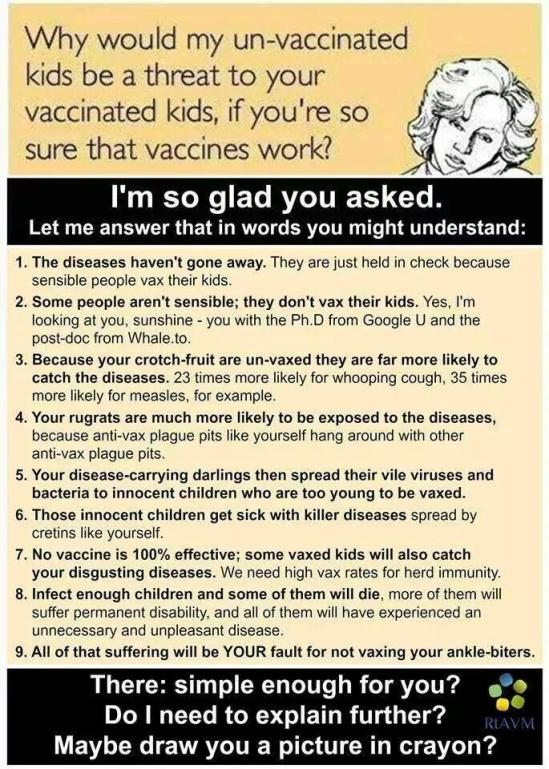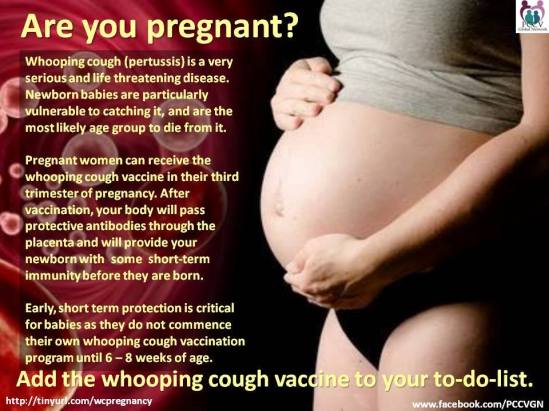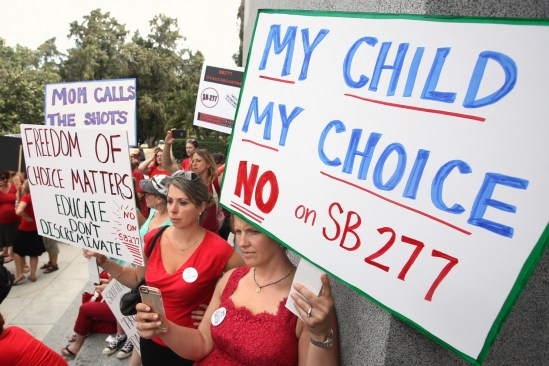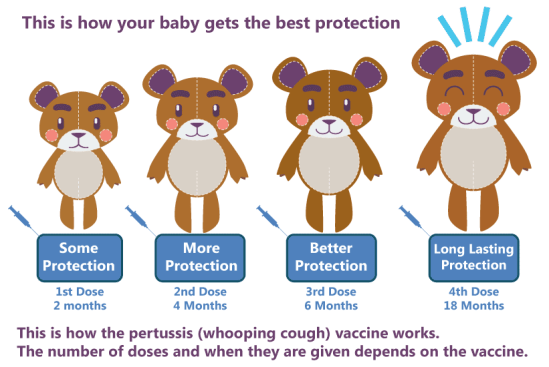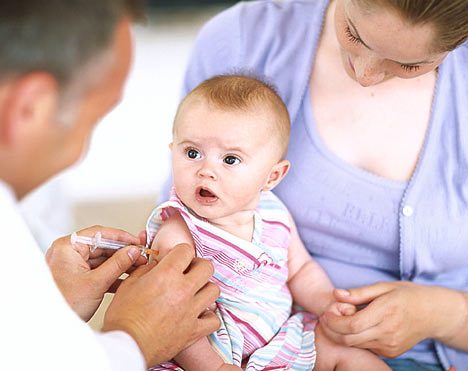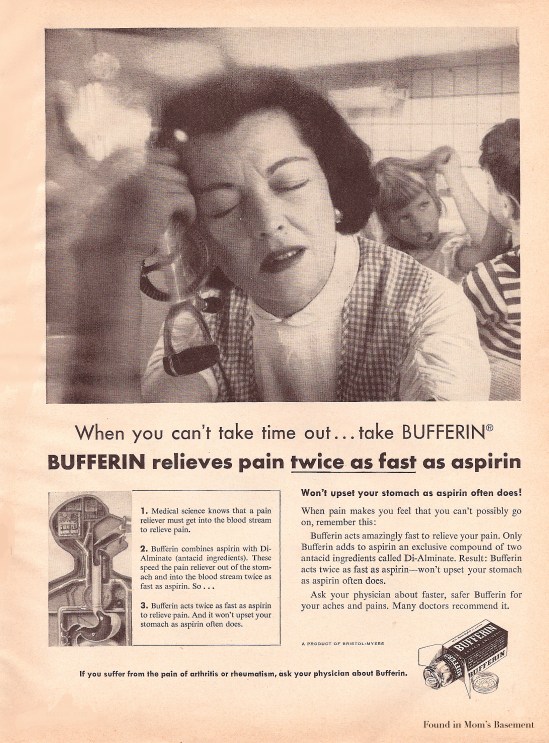Disclaimer: This only lists medical conditions you’d find in fiction which most likely bear no resemblance to real life whatsoever. So don’t take any of it as medical advice. Presidential aging is the notable exception since that’s derived from how US presidents age in office but live to be 90 years old.
Fatal and Severe Illness:

Sorry, but people who die of a serious illness don’t look like that at all. Seriously, Bette Davis should look like absolute hell by this time in the movie. But this is what Ali McGraw’s Disease looks like.
Ali McGraw’s Disease-illness which causes the sufferer to become more beautiful as death approaches. Mostly tends to infect attractive young women with boyfriends, particularly in historical settings.
Incurable Cough of Death-symptom that signifies that a character has what will lead to weakness and manifest itself as a terminal illness. This is especially the case in a lot tuberculosis sufferers in 19th century literature and opera. Also the case when the sufferer coughs up blood.
La Boheme Syndrome-a medical condition in which a character is able to do an incredibly good solo as they are wasting away from a fatal respiratory illness.
Victorian Novel Disease-basically this pertains to a combination of Incurable Cough of Death and Ali McGraw’s Disease. Yet, while it’s terminal, it has no effect on the character’s beauty or their ability to perform. Still, while this illness slowly kills its sufferers, their proximity to the eternal will give them immense wisdom and insight and be never ending sources of advice and comfort to their loved ones. And when they finally slip away, those around them will smile through their tears and rejoice that their souls are now free from this shitty world. Mostly tends to inflict young women and teenage girls known to be always innocent and pure. This is especially the case for such women who have boyfriends or reside in 19th century literature or opera.
Soap Opera Disease-a vaguely defined chronic disease. Often exhibits vague symptoms as well as fatal, but can linger on for a very long time. Sometimes results in a lengthy coma and perhaps a radical change in the victim’s appearance in non-fatal variants. Yet, in most fatal cases, often manifests itself as Ali McGraw’s Disease in the later stages. Often infects characters in daytime soap operas, particularly women.
Childhood Cancer Syndrome-a symptom that makes a severely ill child’s sole existence in the story to tug at the audience’s heartstrings. Often immune to anything other than the disease that will eventually kill them (unless the writer wants to punch the audience’s guts). Sufferers often tend to be wise beyond their years as well as make athletes swear to win a game or match for them, never taking to mind the negative repercussions if they fail to do this. Mostly tends to manifest in children who haven’t hit puberty yet.
Tiny Tim Syndrome-a symptom similar to Childhood Cancer Syndrome in which a chronically ill child’s chief purpose is to inspire some rich jerk into changing his ways so the kid could receive the medical treatment their parents can’t afford.
Dramatic Heart Attack-a medical condition in which a character experiences a heart attack in a display of chest clutching dramatics.
Blood from the Mouth – a symptom is indicative that a character is bleeding internally and is either going to die or need serious medical attention.
Excessive Ortifice Bleeding – a medical condition in which a person has blood coming out from every ortifice all because the writers want a very gory death scene. Usually happens in horror movies and is almost always fatal. Sometimes caused by a psychic or supernatural force.
Convulsive Epilepsy – a medical condition in which a character has a seizure in which he or she loses complete control of their body. Symptoms include flailing arms, writhing on the ground or frothing at the mouth.
Retirony – a medical condition which a person’s odds of survival decline once he or she decides to leave their job or it becomes apparent their term of service will soon end.
Brain Fever – a sudden acute febrile illness brought on by stress or personal issues that results in severe attacks of insanity hallucinations, and delirium. Is sometimes fatal.
Big Guy Fatality Syndrome – a medical condition in which the biggest, strongest, and most massive sidekick is less likely to survive when the shit hits the fan.
Vasquez Syndrome – a medical condition in which a female’s increase in toughness and aggression decreases her odds of survival. Befalls secondary female characters who look too butch to be love interests to the hero, especially if they’re not white. Characters played by Michelle Rodriguez are particular targets.
Sudden Sweetheart Photo Death Syndrome– a medical condition in which a person’s chances dying dramatically increase the moment he or she shows a picture of his or her sweetheart back home. Most prominent in soldiers from WWII movies.
Black Guy Fatality Syndrome – a medical condition which decreases a black guy’s chances of survival if he’s the only black male in the group. Can only be prevented if he brings a male black friend. Most prominent in black males in slasher horror movies.
Plagues:

Remember, when the zombie plague hits, this infographic will come in handy. Seriously, the threat of zombie apocalypse is very real in the world of fiction, particularly science fiction.
Sterility Plague- an incurable disease that infects a large population that renders practically all males and females of child bearing age, unable to reproduce (either inflicting infertility, impotence, or aversion to sex). Usually caused by biological warfare though can arise naturally. Most often appears in science fiction.
Hate Plague-an ailment infecting a large population that causes them to become incredibly disagreeable with each other. Sometimes has a tendency to lead to victims inflicting violence or killing each other. Usually inflicted by mysterious forces or bad guys.
Mystical Plague-a disease outbreak brought upon through the magical powers of a person, group, or creature, whether by accident or design. However, this doesn’t mean that its agents are always immune. Mostly prevalent in fantasy.
Synthetic Plague-a disease inflicted on a large population that was created by humans whether by manufacture or genetic engineering. Can originate by design as a biological weapon or an experiment gone wrong. Usually deadly and might result in people becoming zombies. Usually appears in science fiction post-apocalyptic genre and zombie media.
Radiation Plague-a type of Synthetic Plague that usually infects survivors of a nuclear explosion or meltdown. Usually leads to zombification.
Zombie Plague-plague that usually leads to zombification. Usually caused by a Synthetic Plague.
Bodily Functions:

Wiley E. Coyote may never get the Roadrunner, but he tends to be quite indestructible compared to the rest of us. Seriously, look at how much crap he has to go through with all his schemes literally blowing in his face.
Steel Eardrum- a medical condition in which the character doesn’t suffer hearing damage while in extremely noisy environments without any hearing protection. Most prevalent in war movies and action films.
Water Immunity-a medical condition which allows a character to drink water from any source regardless of whether it’s actually safe to drink.
Heat Resistant Skin-a medical condition in which a character is able to survive in excessively hot temperatures and settings such as a house being engulfed in catastrophic flames.
Explosive-Proof – a medical condition in which a character is able to survive an explosion in close proximity with nothing more than a blackened face, cough puff, or possibly singed eyebrows.
Smoke Filtering Lungs-a medical condition in which a character is able to inhale large amounts of smoke for long periods of time without suffering severe respiratory damage like lung cancer or death.
Large Bowel Syndrome- a medical condition in which a character doesn’t have to go to the bathroom and doesn’t show any signs of constipation, UTI, or IBS.
Strong SCUBA Lungs- a medical condition that allows the character to hold their breath underwater for more than a minute without any assistance from scuba gear.
Electric-Resistance – a medical condition in which a character survives being electrocuted with nothing more than falling over, soot, smoke, and messy hair, even if such episode makes his or her skeleton becomes visible through his or her skin. Happens a lot in cartoons.
Walter White Syndrome- a medical condition that in which a cancer stricken character loses their hair on their head while undergoing chemotherapy treatment, yet retains the rest of their body hair.
Tears of Blood – a medical condition in which a person cries bloody tears which might mean that they caught some deadly virus, are being killed by weird supernatural means, a vampire, or overcome with grief over a lost loved one.
Elastic Skeleton – a medical condition in which a person is able to have their bodies and limbs tied into knots.
Frozen Resistance– a medical condition in which a person can survive being frozen with no ill effects for a very long time other than being in hibernation before thawing out.
Encino Man Syndrome – a medical condition in which a person can survive freezing for years without suffering ill effects other than being in hibernation prior to thawing or signs of age without any explanation whatsoever.
Angst Coma – a condition in which a person falls into a coma or catatonic state due to personal issues. Can only be cured if they’re resolved.
Substances:

Acquiring an immunity to poison can come in handy in situations like this. In real life, trying to acquire an immunity to poison will certainly kill you.
Acquired Poison Immunity-a medical condition in which a character becomes immune to a particular poison by regularly ingesting it in small doses over a period of time.
Unexplainable Poison Immunity –a medical condition in which a character can suck out the poison from his or her companion without experiencing ill effects.
Drug Immunity-a medical condition in which a character is immune to the effects of a certain substance.
Jekyll and Hyde Syndrome-a medical condition in which a person ingests certain substances to change personalities at will so they could engage in activities they’d otherwise be arrested for. Yet, will eventually result in the person losing control as the Hyde personality takes over.
Laxative Immunity-a medical condition in which a character only experiences loose bowels after being subject to a laxative prank (or pertaining to other related substances).
Prescribed Cold Turkey Syndrome-a medical condition in which going off prescribed medication doesn’t result in anything worse than a hungover like withdraw or a grudging admittance that the medication helped.
Fertility and Sex:

Of Laban’s two daughters, Rachel will be Jacob’s one true love and favorite wife he worked 14 years for. Leah, on the other hand, will be basically the unwanted wife Jacob was tricked into marrying but kept around because she has at least 7 kids to him while Rachel has 2. Poor, poor, Leah.
Inverse Fertility Syndrome-a medical condition in which a character’s desire for a biological child will drastically inhibit his or her ability to conceive one. Yet, it also increases the likelihood of characters in characters who don’t want kids, even if they’re diagnosed as sterile, using birth control, had a vasectomy, or are virgins. Can only be cured through in vitro fertilization, magic, possibly giving up trying or warming up to parenting, adoption, or divine intervention. Usually results in teen pregnancy whenever a teenage couple have sex, even the first time.
STD Immunity-a medical condition in which a character has a large number of sexual partner yet never shows any symptoms of any STDs. Mostly prevalent in action movies, fantasy, and science fiction. Usually present in male action heroes, particularly those with their own franchise.
Leah Syndrome-medical condition in which a character’s past or unwanted sexual partner is most likely the co-parent of their child. Usually affects reluctant polygamists, guys who want to get rid of their exes, women in abusive marriages, promiscuous single moms, and divorcees.
Inverse Paternity Syndrome-a condition in which somebody’s father is the guy everyone else in the cast doesn’t want him to be. A variant of Leah Syndrome solely pertaining to unknown paternity.
Downton Abbey Syndrome-a condition in which one party responsible for a child’s conception suddenly and tragically dies around its birth. Most of the time it’s the father, especially if the child was conceived when its parents weren’t married and/or in wartime. Ditto, if he kills over during the pregnancy. If it’s the mother, she’ll usually die in childbirth. Nevertheless, this usually befalls parents who haven’t conceived previously.
Sudden Unmarried Dad Death Syndrome – a condition in which an unmarried father or father to be tragically dies either during his baby mama’s pregnancy or around the child’s birth, just so the guy isn’t made to seem like a deadbeat jerk and the single mom can have an angsty out of wedlock pregnancy that might lead to her having give up her kid at some point. A variant of Downton Abbey Syndrome that usually happens in stories where the single mom is the main character. Can only be prevented through a shotgun wedding.
Tom Jones Syndrome-condition in which the child’s parental revelation improves his or her fortunes drastically.
Disney Mother Death Syndrome-a condition in which a main character’s parent dies sometime during their childhood, particularly before the plot kicks in. Usually happens to the mother, especially if the protagonist is female.
Elastic Uterus- a condition in which a pregnant woman can deliver an abnormally large newborn baby fairly easily within minutes after the contractions start.
Squeakly Clean Childbirth- a condition in which a pregnant woman delivers a baby without much disgusting stuff coming from her vagina.
Quick Childbirth Recovery – a condition in which a woman can return to her duties right after done giving birth in a short amount of time.
Constant Ovulation Syndrome- a condition in which a woman doesn’t go through her monthly menstruation period and gets pregnant after having sex. Very common in teenagers.
Wedding Enhanced Fertility- a condition in which a woman unexpectedly becomes pregnant around the time she marries or is engaged to the child’s father. Usually leads to a happy, nice, and non-angsty pregnancy.
Star Trek Genetics – a medical condition in which an inter-species couple can have sex and produce fertile offspring regardless of configurations pertaining to their reproductive systems.
Melanie Wilkes Pregnancy– a medical condition in which a woman’s pregnancy lasts longer than it should, particularly if the author wants her to have a Catastrophe-Induced Labor in her American Civil War novel.
Express Delivery- a medical condition in which a woman gives birth to a healthy baby despite being pregnant for less than 8-9 months. Babies born this way usually resemble those born at full term and require no medical assistance associated with most premature deliveries. May give an indication that the child is devil spawn, monster, an alien hybrid, fantasy/humanoid hybrid, or mutant.
Fetus Terrible – a medical condition in which a pregnant woman suffers from complications caused by the fetus wreaking havoc inside her body. Related to Satanic Pregnancy Syndrome. Mostly results in Express Delivery, but may cause harm to the mother in which Caesarian delivery is best recommended (since most usually develop too quickly for abortion to be an option).
Convenient Miscarriage – a medical condition in which a woman miscarries a baby either to have highly tragic situation or because the writers really don’t want to deal with the implications of having to create a new character or cast child actors. Usually happens to women who aren’t happy about their pregnancies.
Hunger Games Period Skip– a medical condition in which a girl or woman of childbearing age fails to menstruate due to being a contestant in a fight to the death competition on national television.
Pre-Menstrual Syndrome (PMS) – medical condition in which a girl or woman of childbearing age goes into near psychotic anger or dramatic mood swings before or during her time of the month.
Menstrual Menace – a medical condition in which a girl or woman of childbearing age experiences supernatural menace during her time of the month. Side effects can result in great power and great insanity, fairy magnetism, and reality warping.
Menstrual Lycanthropy – a medical condition in which a girl or woman of childbearing age transforms into a werewolf during her menstrual cycle.
Satanic Pregnancy Syndrome (SPS) – a medical condition in which a pregnant woman suffers from complications caused by the fetus wreaking havoc inside her body because she was unwittingly impregnated by Satan and is carrying the Antichrist. May result in Express Delivery. A variant of Fetus Terrible. Abortion is best recommended in the early stages, assuming that Prince of Darkness paternity can be established and if there’s no doubt the fetus has no capacity to change (the latter which is much more problematic to prove except in horror movies where Satanic spawn usually try to bring upon the end of the world, no matter what). But even this might not be an option in most cases.
Village of the Damned Syndrome- a condition in which all women of child bearing age are impregnated by mysterious forces and give birth to fast growing, evil psychic blond children.
Chocolate Baby Syndrome- condition in which a child doesn’t at all resemble either of their parents and either glaringly obvious or acknowledged in the story. However, this doesn’t apply to children conceived through in-vitro fertilization via a sperm or egg bank. Nor does to children who are adopted either. Usually pertains to that the child’s putative father isn’t.
Not So Chocolate Baby Syndrome- condition in which a child doesn’t resemble either of their parents yet is still seen as biologically related.
Catastrophe-Induced Labor- condition in which a pregnant woman goes into labor at the worst possible moment.
Injuries:

Some people just don’t know when to give up. Seriously, the Black Knight should really let King Arthur pass because he’s just cut his bleeding arm off!
Minor Gunshot Wound Syndrome-a medical condition in which a character’s severe injury doesn’t inhibit their ability to function.
Instant Roast – a medical condition that instantly turns a character into a succulent main course after experiencing an explosion or fire.
Hero Immunity- a medical condition in which a character can completely recover from his or her injuries without ever experiencing permanent scars all because they are the designated hero of the story.
Titanium Skull-a medical condition in which a character suffers nothing worse than a headache or dizzy spell after dealing with a blow to a head that rendered them involuntarily unconscious.
Matthew Crawley Syndrome-a medical condition in which character recovers after being paralyzed by a spinal injury in a very short length of time.
Black Knight Syndrome-a medical condition in which a character thinks their severe injury doesn’t affect their ability to function despite obvious evidence to the contrary.
Accordionism- a medical condition in which a person is squashed into a pleated and flexing shape after being crushed by a large object. Occurs a lot in cartoons.
Instant Soprano – a medical condition in which a man’s voice gets dramatically high after experiencing castration or a groin injury. May be temporary or permanent.
Annoying Arrow Syndrome-a medical condition in which being shot by an arrow doesn’t cause the victim anything more than a slight discomfort upon removal but they could still be functional if left unattended.
Recoil Proof-a medical condition in which the shooter is immune from the repercussions of Newton’s Third Law.
Pincushion Syndrome-a medical condition in which the character is heavily shot up but is still able to normally function. May or may not result in death.
Squashed Flatism-a medical condition in which a character is squashed flat but still survives as a flatter version of themselves. Prevalent in cartoons.
Protruding Head Bump – a medical condition in which a large swelling appears on a character’s head that develops after a blow to the head. Disturbance is best not recommended and may cause multiple protrusions as a result.
Head Injury Amnesia-in which a character experiences amnesia due to a head injury. Can be cured by being hit on the head again or regaining their memories through psychiatric intervention.
Head Injury Personality Change-in which a character’s personality and identity change drastically after experiencing a head injury. Can only be cured by being hit on the head again.
Drowning Scream Syndrome-a medical condition in which a drowning character still has the adequate lung capacity to call for help.
Invisible Holes – a medical condition in which a character is wounded with no ill effects except liquid pouring out of their skin. Happens a lot in cartoons.
Extra Fat Cushioning- a medical condition in which enables to character to jump into any soft spot without being subject to injury.
Fall Proof-a medical condition in which a character doesn’t die from the fall unless they hit the ground.
Debris Dodging Speed-a medical condition which allows the character outrun explosions, fireballs, overpressure, ammo, and debris.
Psychic Nosebleed – a medical condition in which someone experiences blood coming out of certain parts of their body as a result of psychic effort.
Disability:

Charly may become smart later on in this but it won’t last. And let’s just say Algernon’s fate is very indicative of what will happen to him. And what gets me is that Cliff Robertson won this Oscar over the great Peter O’Toole.
Disability Superpower-a medical condition in which a disabled character has a superpower that counteracts with their disability.
Inspirationally Disadvantaged-a medical condition that makes a disabled character an inspiration for everyone else. May lead to people marveling at them by performing even the more mundane tasks.
Disability Recovery- a medical condition in which a character who’s been disabled for an extended amount of time suddenly regains the ability to use their disabled organ again. Can either be done by sheer will power, miracles, or medical treatment.
Flowers for Algernon Syndrome –a medical condition in which a mentally challenged person experiences a rapid rise in IQ for a certain amount of time before returning to normal and dying.
Tragic Autism – a learning disorder that impairs a person’s social skills and prevents them from living a normal life. Can range from Idiot Savants and Rain Men to literal minded insufferable geniuses.
Rain Man Syndrome – a form of Autism that gives the sufferer a Disability Superpower.
Idiot Savant – a medical condition in which a person is mentally challenged except in a certain ability.
Compulsive Swearing Tourette’s Syndrome –a disorder in which a person is subject to frequent fits of compulsive swearing. Happens in comedies.
Scrambled Dyslexia –a disorder which causes a person reading difficulties because they see every word scrambled.
Super Obsessive Compulsive Disorder – a disorder which causes a person to be obsessed with order, symmetry, and following patterns of behavior.
Characteristics:

Sorry, Dan Brown, but real albinos just don’t make effective assassins. Seriously, poor vision is a main aspect of the diagnostic criteria for albinism since many albinos don’t have normal development in the retina or in nerve connections between the eyes and brain. As a result, many are legally blind.
Bad AB- Blood Syndrome- a medical condition in which two people who hate each other share a rare blood type and everyone else in their world doesn’t. Yet, it’s unknown to most of the cast that the injured person could receive blood with the same Rh from anybody.
Bad O Blood Syndrome- a medical condition in which the two people who hate each other share a common blood type but the injured person can’t receive blood from anyone else. Mostly because the majority of the cast doesn’t know their own.
Missing Belly Button Syndrome- a condition in which a person has no belly button.
DaVinci Code Albinism – a condition in which a character’s albinism doesn’t harm his or her eyesight.
Chuck Cunningham Syndrome – a condition in which a character disappears without explanation.
Fantasy Health:

Sure Harry’s a wizard all right. But he’s able to talk to snakes because he has a part of a soul from the evil guy who killed his parents who split his soul in his quest for eternal life. Of course, Harry ability to talk to snakes has some unfortunate implications in the Chamber of Secrets.
Resurrection Sickness-a medical condition in which a character isn’t quite the same as their pre-mortem selves after coming back from the dead.
Magical Malfunction Malady-a medical condition in which a magically powered person’s ailment affects their ability to perform magic. Mostly appears in fantasy. May be caused by illness, curse, puberty, or pregnancy. Can result in the sufferer losing their powers or the ability to control them. Usually there is no easy cure so the sufferer either has to wait it out or summon his allies to go on a quest for some strange cure, which usually entails getting some rare or mysterious item in some very remote location.
Demon Possession-a medical condition in which a character’s personality changes and not for the better due to being possessed by a demon. Must be cured by an exorcist.
Voldemort Syndrome-a medical condition in which a character’s quest for eternal life causes them grow ugly and evil.
Gollum Syndrome-a medical condition in which a character’s unhealthy attachment to a magical object causes them to grow ugly and evil.
Horcrux Syndrome- a condition in which a person possesses part of another’s soul and gains that particular person’s abilities.
Peter Pan’s Shadow -a condition in which a character’s shadow takes on a life and personality of its own. Has to be found and sewn back on.
Dark Lord on Life Support – a condition in which a dark magical character is not quite dead but is able to survive due to some magical contraption.
Marvolo Ring Syndrome – a condition results in a magical character’s slow and painful death after touching a dark magical object. Noble assisted suicide is usually recommended.
Magical Coma –a condition in which a character is put into a deep sleep for a very long time under some magical force but can only be awoken through sexual assault or something else. Sufferer will always wake up in the same way as they fell into the coma in the first place with or without life support. And in some cases for women, might be able to sustain a healthy pregnancy.
Body Switching – a condition in which a character finds him or herself in another person’s body. Can only be cured when the relationship with the other person is resolved.
Children:

Sure Pearl is a creepy girl all right, but c’mon, there’s nothing in the book to suggest that she’s bad. I mean she doesn’t kill anyone. She’s just so misunderstood in 17th century Massachusetts.
Soap Opera Sudden Infant Death Syndrome (SOSIDS) – a medical condition in which a baby dies soon after its birth very tragically despite being conceived and carried under optimal conditions and delivered as a healthy baby (if not stillborn). Causes of death can pertain to car accidents and premature labor. Only happens to children of soap opera couples in happy relationships in which the mother is happy about the pregnancy.
Soap Opera Adversity Survival Syndrome (SOASS) – a medical condition in which a baby survives its birth despite being conceived and carried under dicey circumstances such as an affair. Born to women who’ve spent their pregnancies contemplating certain options (like abortion and adoption) and spent months wailing and angsting about the turmoil pertaining to the birth. Children may be subject to Inverse Paternity Syndrome and SORAS, since this happens mostly in soap operas.
Neville Longbottom Puberty – a medical condition in which an awkward looking kid experiences a remarkable transformation during his or her adolescence that signify his or her growth and change as a character.
Pearl Prynne Syndrome -a medical condition in children in which the child looks creepy and says really creepy things but has no indication they pose a danger to anybody.
Damien Syndrome – a medical condition in children resulting from a SPS which renders them completely evil and homicidal.
Hellboy Syndrome – a medical condition in children resulting from a SPS, which results in them having a perfectly normal personality, though appearances may vary.
Premature Male Puberty – a medical condition in which an adolescent boy has the body of an adult man between the ages of 20 to 30 years old. Happens in a lot of teen centered media due to casting adult actors in teen roles.
Adolescent Height Stunting – a medical condition that results in an adolescent character being shorter than both his or her parents as well as other adults, regardless of whether it makes any sense.
South Park Syndrome – a medical condition in which a child is disproportionally short for their age and is never implied to suffer from dwarfism or part of an unusually small humanoid race. Prevalent in cartoon children between the ages of 4-12.
Renesmee Syndrome – a medical condition in which a child manages to grow up in a very short timespan.
Sudden Firstborn Son Death Syndrome – a medical condition in which the oldest male child in the family dies because his parents were being jerks. Takes some form of divine punishment, especially after a series of plagues.
Aging:

This must be the scene in Hamlet when he’s telling Ophelia to “get thee to a nunnery.” Oh, wait a minute he’s yelling at his mom Gertrude. Seriously, she looks way too young to be his mom. And he looks way too old to be going to college.
Cartoon Child Syndrome – a condition in which a child remains at the same age for a very long time for no explanation since it’s much easier for the animator in question and that the voice actor is an adult anyway.
Peter Pan Syndrome – a condition in which a child remains at the same age for a very long time. Yet, unlike Cartoon Child Syndrome, it’s explained in story
Pre-Natal Maturity – a condition in which a person begins life as an adult.
Benjamin Button Syndrome-a condition in which a person begins life as an old person and dies as a baby.
Shakespearean Rapid Aging Syndrome (SRAS)- a medical condition in which a teenager or young adult has the body of someone who’s at least 30 years old. Endemic in Shakespearean drama, especially in productions of Richard III, Romeo and Juliet, or Hamlet. Happens in a lot movies, theatrical, and TV productions set in historical times, in which the actors are considerably older than their characters should be. Most prevalent in males.
Agora Syndrome – a condition in which a person appears considerably younger and more attractive than they should be. Happens in a lot of historical adaptations but is less common than SRAS.
13 Going on 30 Syndrome – a condition in which a person ages for several years in the span of a night.
17 Again Syndrome -a condition in which a person’s aging is reversed several years in the span of a night.
Esther Coleman Syndrome – a disorder in which a person stops growing and aging as a child.
Methuselah Syndrome-a condition in which a person lives way past the average human lifespan.
Soap Opera Rapid Aging Syndrome (SORAS)- a condition in which a child spends a short amount of time offstage, only to emerge as considerably older than any normal kid would be. Prevalent in movie series and TV shows, especially soap operas. Yet, on sitcoms, babies only age up after only a few years.
Immortal Aging Syndrome-a condition in which a character’s immortality doesn’t stop them from aging.
Immortal Adult Stasis- a condition in which an immortal character comes of age and remains that way forever. That or granted immortality at that age.
Abnormal Infantile Memory Syndrome- a condition in which a child could remember a lot of stuff before the age of 3 other than stuff that’s either very traumatic or significant in their lives like the birth of a sibling for instance.
Sudden Grandparent Death Syndrome- a condition in which a child’s grandparents die sometime before the plot gets in so they can have a terrible living arrangement as an orphan, even when such demises make absolutely no sense whatsoever.
Harry Potter’s Grandparents Death Syndrome- a variant as SGDS in which a child’s grandparent die sometime before the plot kicks in when such a natural death doesn’t make absolutely no sense in its fictional universe.
Stress Induced Premature Aging – a condition in which a character ages considerably quickly due to excessive stress. A common symptom is hair going gray or white. May be caused by dealing with a severe illness, adverse conditions, or after having to make a difficult decision.
Gillian Darmondy Syndrome – a condition in which a character seems unbelievably young to parent his or her biological child, but in a way that makes perfect sense such as teen pregnancy, alien biology, being unusually attractive, paranormal activity, divinity, or anything to do with magic or futuristic technology.
Gertrude Syndrome- a condition in which a character seems unbelievably young to parent his or her biological child but where it makes absolutely no sense. May be caused by the author’s inability to comprehend biology or basic mathematics or casting an actor noticeably younger than the character should be. Perhaps even younger than the person playing his or her biological child.
Anime Shrinkage – a condition in which an elderly character’s height shrinks at an accelerated rate in a short amount of time than it should.
Dorian Gray Syndrome -a condition in which a character never ages but with a dark magical catch. May result in the sufferer losing his or her soul.
Presidential Aging – a condition in which a character’s rapid aging has no effect on their lifespans.
Psychological Conditions:

Dexter Morgan: I’m not sure if modern psychology would classify as a psychopath or just a homicidal maniac with childhood induced PTSD. I mean he does have people he sincerely loves in his life. Still, since it’s TV and he likes to kill people, he’s a psychopath. But he has a code on who he kills. Very difficult to classify. However, many of his victims tend to fit in the psychopathic mindset much better than he does.
Gold Fever-a condition which results the intensity of a character’s insatiable greed and propensity for violence is inverse to their sanity and self-control.
Jack Torrance Syndrome-a variant kind of Cabin Fever that causes raving lunacy and homicidal tendencies.
Napoleon Delusion-a psychological condition in which a sufferer thinks they’re a famous dead celebrity. Those who suffer from this may or may not be a danger to other people.
Vertigo Syndrome-a psychological condition in which the sufferer makes their significant other drastically alter their appearance in order to resemble a dead person the afflicted has been obsessed about but hasn’t even met.
Laura Syndrome-a psychological condition in which the sufferer falls in love with a person reputed to be dead who may not be.
Oedipus Complex -a psychological condition in which a person hates one parent and has a secret wish to sleep with the other. Sometimes the sufferer might not even realize it.
Multiple Personality Crisis Disorder- a psychological condition in which a serious personal issue causes a person to have multiple personalities yet, disappear once they get their lives back together again. Yet, it won’t always be the same personality they started out with.
Three Faces of Eve Disorder-a variant of MSCD in which the person recovers from having multiple personalities with a totally different identity and personality than they started out with.
Richard Harrow Syndrome- a psychological condition in which a character’s desensitization from violence and capability of racking up huge body counts doesn’t prevent them from being a perfectly decent person otherwise and possible the nicest one in the whole cast.
Norma Desmond Disorder- a psychological disorder in which a character is running a whole era behind and still thinks they could make a comeback despite that ship sailing.
Manchurian Candidate Syndrome- a psychological condition in which a character is brainwashed into being an assassin.
Alfred Hitchcock Syndrome- a psychological condition in which a character seems to develop a strange rabid interest in murder mysteries that lead to violence or not.
Cassandra Syndrome- a psychological condition in which a character always tells the truth but nobody believes them.
Adoption Denial Syndrome- a psychological condition in which a character doesn’t know they’re adopted even though they should’ve obviously figured it out by now.
Paternal Denialist Syndrome- a psychological condition in which a male character thinks that he’s a child’s biological father despite obvious evidence to the contrary.
Post-Traumatic Amnesia – a psychological condition in which a person loses all prior memories or sense of identity after witnessing a traumatic incident.
Science-Related Memetic Disorder – a psychological disorder in which a character uses their sociopathic tendencies to conduct scientific research or experiments. May lead to beyond horrific results for victims.
Destructive Insanity – a psychological condition in which a person isn’t in touch with reality as well as a poses a hazard to themselves and others. Can be caused by anything, notably a terrible childhood or a traumatic moment. Symptoms include violent outbursts, an insatiable urge to kill people or self-harm, creepiness, unstoppable rage, or substance abuse. Sometimes hearing voices in the head, hallucinations, talking to puppets, etc.
Trauma Sociopathy – a psychological condition in which a person becomes a psychopath after experiencing a brain injury in a traumatic incident during childhood.
Pyromania- a mental disorder in which a person loves to start fires, watch them, and see the people burned in them. Are always arsonists and serial killers.
Harmless Insanity – a mental disorder in which the sufferer causes no harm whatsoever while his or her psychological symptoms are used for comedy.
Single Issue Psychology – a psychological condition in which a person’s psychological problems are due to one major thing pertaining to their lives.
Psychopathy – a psychological condition in which a person may seem rather charming and outgoing but devoid of any empathy, shame, humility, or sense of responsibility. Doesn’t care what is right or wrong, is manipulative, engages in hedonistic behavior, and could possibly be a psycho killer, a Wall Street executive, or both. Sufferers are thoroughly irredeemable.
Post Traumatic Stress Badass Disorder – a psychological condition in which a character’s traumatic experience in war makes him or her exceptionally capable of handing any dangerous situation.








